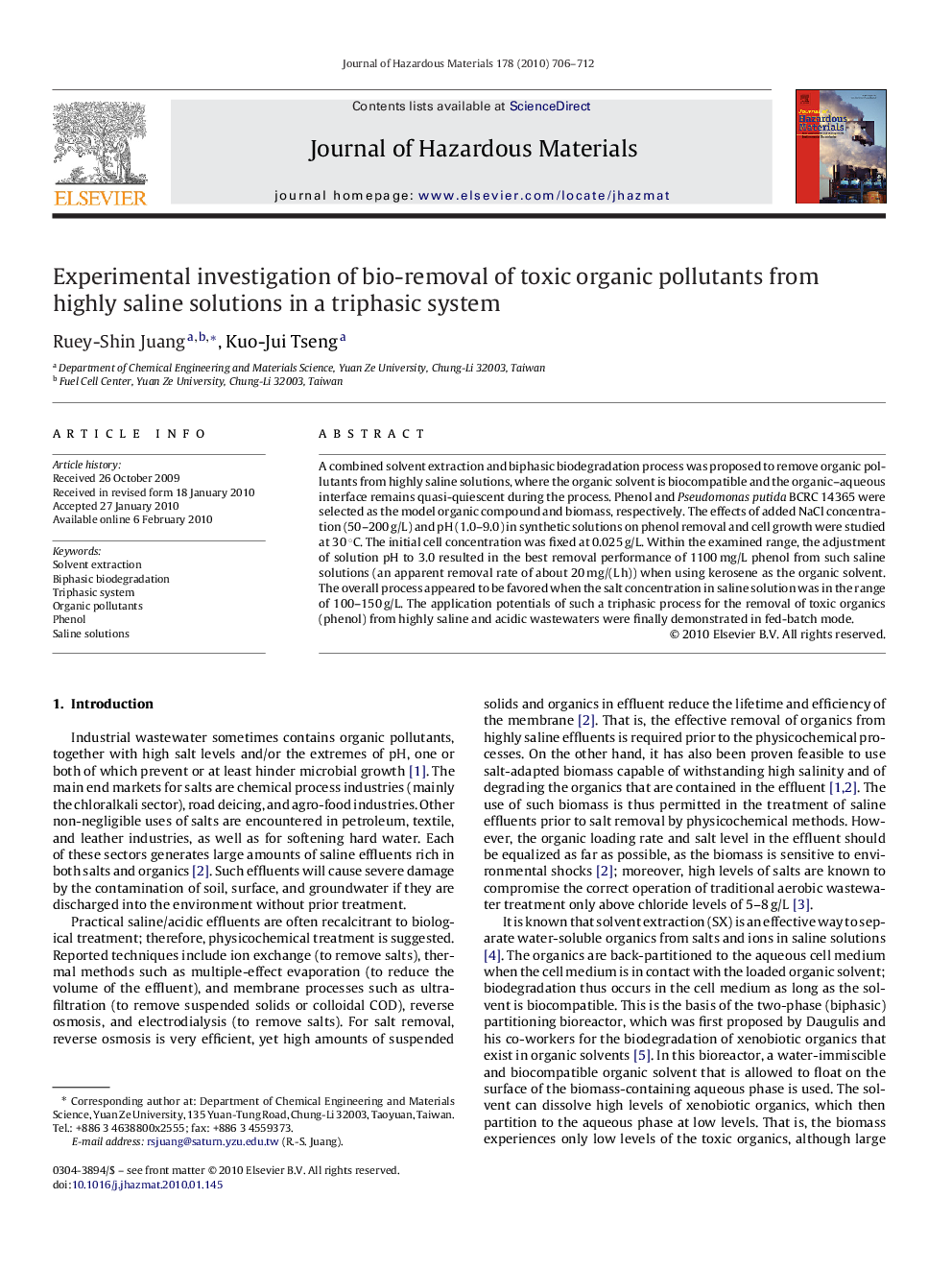| Article ID | Journal | Published Year | Pages | File Type |
|---|---|---|---|---|
| 580321 | Journal of Hazardous Materials | 2010 | 7 Pages |
Abstract
A combined solvent extraction and biphasic biodegradation process was proposed to remove organic pollutants from highly saline solutions, where the organic solvent is biocompatible and the organic-aqueous interface remains quasi-quiescent during the process. Phenol and Pseudomonas putida BCRC 14365 were selected as the model organic compound and biomass, respectively. The effects of added NaCl concentration (50-200 g/L) and pH (1.0-9.0) in synthetic solutions on phenol removal and cell growth were studied at 30 °C. The initial cell concentration was fixed at 0.025 g/L. Within the examined range, the adjustment of solution pH to 3.0 resulted in the best removal performance of 1100 mg/L phenol from such saline solutions (an apparent removal rate of about 20 mg/(L h)) when using kerosene as the organic solvent. The overall process appeared to be favored when the salt concentration in saline solution was in the range of 100-150 g/L. The application potentials of such a triphasic process for the removal of toxic organics (phenol) from highly saline and acidic wastewaters were finally demonstrated in fed-batch mode.
Related Topics
Physical Sciences and Engineering
Chemical Engineering
Chemical Health and Safety
Authors
Ruey-Shin Juang, Kuo-Jui Tseng,
